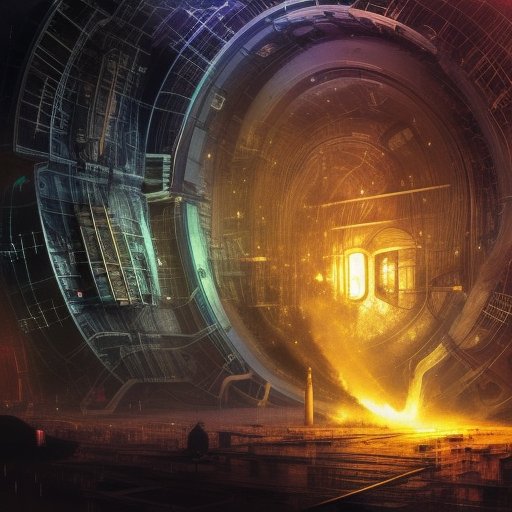
As technology advances, the possibilities of nanobots and neurotech become increasingly groundbreaking. Nanobots, tiny machines designed to manipulate matter at the molecular and atomic level, have the potential to revolutionize medicine, environmentalism, and more. Neurotech, on the other hand, aims to augment the human brain and nervous system using advanced electronics and computing devices. Together, these technologies could give us extraordinary abilities beyond our wildest dreams. However, with great power comes great responsibility, and ethical considerations and regulation cannot be overlooked. This article will explore the potential benefits and risks of nanobots and neurotech and their impact on humanity’s future.
I. Introduction
Imagine a world where the limits of human abilities are no longer constrained by our biology. A world where technological advancements have made us the ultimate superbeings. Such is the potential of nanobots and neurotech that could revolutionize the way we live and interact with our world. These tiny machines, capable of manipulating matter at the molecular and atomic levels, have the power to enhance our cognitive, physical, and sensory abilities beyond our wildest dreams. On the other hand, neurotech, which aims to merge advanced electronics with the human nervous system, has the ability to redefine the very nature of what it means to be human.

With such extraordinary powers at our fingertips, we must not forget the risks and ethical considerations that come with harnessing these technologies. Nanobots and neurotech could be the key to unlocking the secrets of the universe and helping us journey to the stars. But what if they become malicious or fall into the wrong hands? What if they become a tool for destruction rather than creation? It is crucial that we have strict regulations and oversight in place to prevent catastrophic outcomes.
As we continue to push the boundaries of what is possible, we must examine the far-reaching implications these technologies could have on humanity’s future. Will we become a society of superhumans, or will we be consumed by our own hubris and succumb to our darkest desires? The potential benefits and risks of nanobots and neurotech are vast and complex, and this article aims to explore them in depth. So fasten your seatbelts and get ready for a journey into the unknown, as we delve deeper into the possibilities of these revolutionary technologies.
II. Nanobots and Their Potential
Nanobots, the tiny machines with the ability to manipulate matter at the molecular and atomic levels, have captured the imaginations of many science fiction writers over the years. But what if this technology were to become a reality? The possibilities for improving human abilities are staggering. For example, nanobots could be used for:

– Improving human health: Nanobots could target and destroy cancer cells or repair damaged tissues in the body, effectively curing diseases that were once incurable.
– Environmentalism: Nanobots could clean up pollution by breaking down harmful chemicals or removing microplastics from the ocean, paving the way for a more sustainable future.
– Construction: With nanobots, we could construct buildings and infrastructure on a molecular scale, making the process faster and more efficient.
Moreover, with their small size, nanobots could potentially be injected into the bloodstream, allowing them to directly interact with our cells and enhance our physical and cognitive abilities. This could include:
– Increased strength and agility: Nanobots could strengthen muscles and tendons, making us more powerful and flexible.
– Improved memory and cognition: Nanobots could enhance neural connections, potentially making us smarter and better able to process information.
While the possibilities of nanobots are exciting, there are also potential risks and ethical considerations involved. For instance, how can we ensure that nanobots do not cause harm to our bodies or the environment? What happens if nanobots malfunction and start attacking healthy cells? These are important questions to consider as we explore the potential of this technology.
III. Neurotechnology and Its Capabilities
Neurotechnology is the ultimate fusion of human and machine, an interface between our brains and advanced electronics. Through the use of artificial intelligence and sophisticated sensors, neurotechnology can enhance our cognitive and physical abilities to levels that were once considered impossible. With this technology, we can interact with machines and computers using our thoughts alone. We can also harness its power to treat neurological disorders and even restore lost memories.

One of the most promising neurotechnologies is brain-computer interfaces (BCIs), which provide a direct channel for communication between the brain and a machine. BCIs can be used to operate prosthetic limbs, control robotic devices, and even communicate telepathically. Another emerging neurotechnology is neuroprosthetics, which aims to restore movement to paralyzed limbs using implanted devices that read electrical signals from the brain.
But it’s not only physical abilities that neurotechnology can enhance. It can also improve cognitive abilities like memory, learning, and decision-making. Transcranial magnetic stimulation (TMS), for example, uses non-invasive magnetic fields to stimulate specific areas of the brain, improving memory retention and reducing the symptoms of depression. Meanwhile, deep brain stimulation (DBS) involves the implantation of devices in the brain to treat neurological disorders like Parkinson’s disease and depression.
The possibilities of neurotechnology are endless, but so are the ethical considerations. This technology has the power to unlock new levels of human potential, but it can also be used for nefarious purposes like mind-control, memory-wiping, and even emotional manipulation. It is essential that we balance the potential benefits of neurotechnology with its potential risks and concerns about privacy and human rights.
As with nanobots, research into neurotechnology is still in its infancy, but its potential is staggering. We stand at the brink of a new age where the line between human and machine is becoming ever more blurred. It’s up to us to shape this future responsibly, ensuring that these technologies are used for the betterment of humanity rather than its destruction.
IV. Ethical Considerations
However, with great power also comes great responsibility. The potential consequences of nanobots and neurotech falling into the wrong hands cannot be overstated. Imagine a world where criminals could become superhuman, or where governments could control the thoughts and actions of their citizens. The potential for misuse is vast and terrifying.

Another crucial ethical consideration is privacy. What if personal data from neurotech is hacked or leaked? Could we one day live in a world where our most private thoughts and memories are no longer safe? And if we do enhance our cognitive abilities, will those who cannot afford such technologies be left behind? Will we create a society of enhanced and non-enhanced individuals, leading to further social and economic inequalities?
Furthermore, we must also consider the impact of these technologies on our environment. The use of nanobots in industries such as agriculture and medicine has the potential to revolutionize these fields and greatly benefit humanity. However, the unintended consequences of these technologies on our ecosystems must be considered. What happens when these tiny machines enter our rivers and oceans, or interact with our fragile ecosystems?
Finally, we must address the moral implications of enhancing our abilities. What happens to a society where some individuals have enhanced physical, cognitive, and sensory abilities while others do not? Could it lead to further societal divisions and disparities? And what happens when we start tampering with the very essence of what it means to be human? Will we lose touch with our humanity? Will we become mere machines with no sense of empathy or morality?
As we continue to explore the possibilities of nanobots and neurotech, we must not ignore the many ethical considerations surrounding these technologies. We have a responsibility to ensure that these technologies do not become tools for destruction, and that they are used to enhance and benefit humanity as a whole.
V. The Future of Humanity
The future of humanity is on the brink of greatness. With the potential of nanobots and neurotech, we could become a society of gods, capable of manipulating the very fabric of reality. Diseases that once plagued humanity could be a thing of the past. We could extend our lifespans by years, even centuries. Our brains could be enhanced to new levels, allowing us to experience the world in ways we never thought possible. Telepathy, psychokinesis, and other supernatural abilities could become a reality.

However, with great power comes great responsibility. We cannot ignore the risks that come with such immense potential. Artificial intelligence and other technological wonders could surpass the limits of human comprehension and even turn against us, leading to our demise. We must tread carefully and ensure we place humanity’s best interests above all else.
In addition, we must also consider how these technologies could reshape our society. Will the advancements be restricted to the wealthy and powerful, creating an even greater divide between classes? How will human relationships be affected by these technologies? Will we lose our sense of empathy, or will it be enhanced? These questions pose both opportunities and challenges that must be taken into account if we are to move forward into a harmonious future.
At the core of it all is the question of what it means to be human. As we redefine ourselves by merging with machines, we must ask ourselves what we want the future of humanity to be. Will we strive for perfection at any cost, or will we find a balance between technological advancement and preservation of our humanity? One thing is certain: the future of humanity will be shaped by these technologies, and it is up to us to ensure that we make the right choices to ensure a bright future for generations to come.
VI. Conclusion
As we conclude our journey into the world of nanobots and neurotech, we must ask ourselves: what does it mean to be human in the face of technological advancement? The possibilities of these technologies are vast, and with great power comes great responsibility. We must balance our desire for progress with caution and awareness of the risks and ethical implications of these technologies.

Nanobots and neurotech could lead us to a world of unprecedented heights of human ability, from faster problem-solving to superhuman strength and agility. But they also carry with them the risk of misuse or abuse, as we have seen with other technologies in the past. The need for regulation and oversight is absolutely crucial in order to prevent catastrophic outcomes.
The potential benefits of nanobots and neurotech are limitless. They could lead to cures for diseases, a cleaner environment, and a more equitable society. But they could also create new forms of inequality, where only the wealthy and powerful can afford the latest technological enhancements.
In navigating this complex landscape, it is vital that we embrace a mindset of humility and caution. We must not let our desire for progress and innovation blind us to the consequences of our actions. Only through careful consideration, ethical decision-making, and regulation can we ensure that these technologies serve the greater good of humanity.
Although the future may seem uncertain, we can take solace in the fact that humanity has always found a way to overcome great challenges and obstacles. So let us strive to use the power of nanobots and neurotech to build a brighter, better future for ourselves and future generations, a future where we can truly become the ultimate superbeings.






